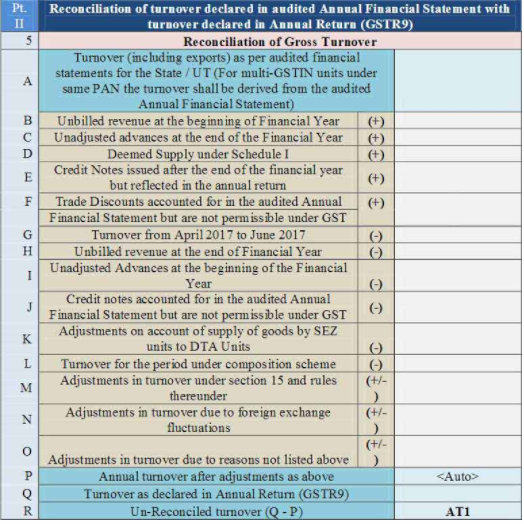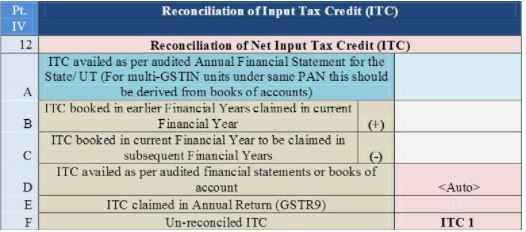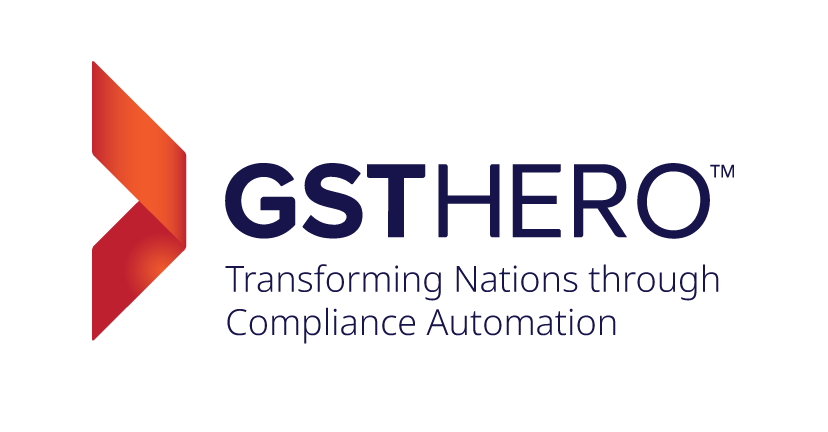GST Audit (GSTR9C Form) is the examination of records returns and other documents maintained to be filed by the GST registered taxpayers who are having aggregate turnover above 5 crores annually.
Form GSTR9C is an annual GST return that the taxpayers have to file along with an audited financial statements.
Every eligible taxpayer has to get their annual financial statements audited. However, there are certain changes that have been introduced recently.
Now, self declared GSTR9C format is also acceptable by the department. This article, explains those changes in detail.
In this comprehensive article, we have covered all the important facts of Form GSTR 9C like GSTR 9C Due Date, GST Audit limit, etc.
What is GSTR 9C Reconciliation (GST Audit) under GST?
Form GSTR 9C (GST Audit) – Brief details
We can say that, GSTR 9 and 9C are interrelated.
As per the GST Rules, every registered taxpayer is mandated to file GSTR 9 annual return but now the taxpayers whose turnover exceeds Rs. 5 Crore in the given Financial Year are required to file Form GSTR 9C (GST Audit).
Along with the GSTR 9C Audit form, the taxpayer also has to fill up the reconciliation statement that is duly certified.
- As per the Section 35 Sub-section (5) of the CSGT Act, 2017, every GST registered taxpayer whose annual aggregate turnover in a given Financial Year exceeds Rs. 5 Crore, is required to get his accounts audited.
- These taxpayers are expected to submit certified audited annual accounts & reconciliation statements, in the FORM GSTR-9C on the GST portal.
A separate certified statement has to be submitted to the GST portal for every GSTIN registered under a single PAN.
That means, there can be multiple GSTR 9C filing for a single PAN.
GSTR 9C Audit Form - Who is required to file it?
GSTR9C Turnover Limit - All the regular taxpayers whose annual aggregate turnover exceeds Rs. 5 Crore in a given Financial Year are mandated to file GSTR 9C.
These taxpayers are also required to furnish a reconciliation statement and certification of audit.
Following types of taxpayers are exempted from filing Form GSTR 9C audit.
- Casual taxpayer
- Input Service Distributor (ISD)
- Government departments
- Taxpayers deducting tax at source (TDS)
- E-com aggregators collecting tax at source (TCS)
- Composition Scheme dealers
- Taxpayers with aggregate turnover less than Rs. 5 Crore
- Non-resident taxpayers
- OIDAR service providers
GSTR 9C Eligibility (GST Audit Applicability)
To understand the provision for GST Audit limit, visit the detailed blog from the link
GSTR 9C Filing – Importance of Reconciliation in the process

Why is GSTR-9C important?
GSTR-9C reconciliation consists of - Reconciliation between GSTR 9 annual returns and the data in your audited financial statement.
It is evident that GSTR 9 annual return is an important document to be furnished along the GSTR-9C return. Hence it is essential that your GSTR-9 return is flawless and there are no errors inserted in the return.
How GSTR-9 depends upon GSTR-1 and GSTR-3B?
GSTR-9 Reconciliation against GSTR-1 & GSTR-3B will help businesses to file an accurate GSTR 9 annual return.
When your GSTR-9 return is flawless, the GST auditor who is auditing your statement will find no mismatches an you can successfully certify the financial statement.
It simply means, GSTR-9 annual return is the most important document to successfully get certified for GSTR 9C audit.
Using an automated GST return filing tool like GSTHero (Authorized GST Suvidha Provider) will help your business in:
- Eliminating clerical mistakes
- Easy integration with your existing ERP
- Auto-population of GSTR-9 tables in a single click
- Easy detection and correction of errors
- 100% compliant with the dynamic GST laws
GSTR 9C Self Certification (GST Audit Self Declaration, limit)
Finance Act 2021 moved a proposal to eliminate the certification by CA for GSTR-9C.
This proposal was accepted in the Union Budget 2021 and was applied from Annual Return of FY 2020-21.
As per this change,
- Taxpayers can now ‘Self-certify’ the reconciliation statement in the GSTR 9C Form.
- Taxpayers need not get the statement certified from a CA or a Cost Accountant.
- This change has amended the Section 35 and Section 44 of the CGST Act of 2017.
GSTR9C threshold limit update (GSTR9C audit limit under gst)
- Rule 80(3) & PART-B of the CGST Rules have been amended define the new eligibility to file GSTR-9C return.
- As per the new Rule, Taxpayers whose annual aggregate turnover EXCEEDS Rs. 5 Crore is mandated to file GSTR-9C.
GSTR 9C Due Date
GSTR-9C must be filed on or before 31st of December succeeding the end of the FY.
GSTR 9 & self certified GSTR-9C Due date extension FY 2020-21:
The due date to file self certified GSTR-9C has been extended up to 28th February 2022.
How to file GSTR 9C
GSTR 9C can be filed online on the GST portal. Follow the given steps to use the online utility to file GSTR 9C Audit.
Steps to file GSTR-9C using the Online Utility
From where can I download and use the GSTR-9C Offline Utility
Taxpayers need to download the .zip file of GSTR-9C offline utility from the GST portal.
GSTR 9C Format in Excel can be downloaded from the GSTR 9 offline utility link provided.
Following is the link to download GSTR-9C offline utility file.
Form GSTR9C Format
Form GSTR9C Format has two major parts:
Let us understand in detail the sections of GSTR9C Audit form:
Part A: Reconciliation Statement
GSTR-9 is filed on the GSTIN level and NOT on entity level.
It means that, if a taxpayer has multiple GSTINs under one PAN, he must file each one's GSTR-9 return separately, given that their GSTINs are registered as regular taxpayers for part or whole financial year.
The Reconciliation Statement is further divided into five parts:
Part 1 : Basic Details
Captures data like GSTIN, Legal name, Trade Name

Part 2 : Reconciliation of turnover declared in Audited Annual Financial Statement
This section captures gross and taxable aggregate turnover in GST declared by the taxpayer in the GSTR 9 Annual return.
To learn more on PART 2 filing of GSTR 9C, visit the dedicated article, GST Audit Format.

Part 3 : Reconciliation of tax paid
In this section, the taxpayer is required to furnish rate-wise detail of the tax liability. The taxpayers are also required to furnish the additional liability due to reconciliation errors in GSTR-9 filing.
To learn more on PART 3 filing of GSTR 9C, visit the dedicated article, GST Audit Format.

Part 4 : GST Reconciliation of Input Tax Credit (ITC)
Taxpayers are required to be furnish the ITC availed by taxpayers and reported in their GSTR-9 return and the annual audited financial statement.
To learn more on filing Part 4 of GSTR 9C Audit, visit the dedicated article on GST Audit Report Format.

Part 5 : Auditor’s recommendation on additional Liability due to non-reconciliation
This section captures the Auditor’s recommendation the additional liability that may be identified through reconciliation & GST Audit or pending payments from the taxpayer’s side.
In this section, the Auditor shall also recommend if there are any other amounts to be paid for such supplies that are not included on the GSTR 9 annual return.

Part B: Certification

A self-certification is also done after the GSTR-9 filing.
Following are the major parts in the PART B – Certification.
1. Certification in cases where the reconciliation statement (Form GSTR 9C) is drawn up by the person who had conducted the audit
Key details in this part are:
- Balance Sheet Date
- Profit & Loss account/income & expenditure with dates
- Cash flow statement with dates
2. Declaration by certifying authority
3 (A). Reporting of observations or differences
3 (B). Declaration by certifying person about obtaining the relevant information for the audit.
4. Documents required under Section 35 (5) of the CGST Act.
5. Details and transactional information stated in GSTR 9C Form.
GST Audit Checklist – How can GST Audit help in GSTR 9C filing?
Notification No. 29/2021 – Central tax
This notification has amended the CGST act by omitting the Section 35 sub-section (5) of the CGST Act, which mandated the requirement of an audit by a CA or CMA.
It simply means that the businesses are now NOT MANDATED to run audits by CA or tax professionals. Instead, they can self-certify the Form GSTR 9C PDF.
To automate this process and file 100% correct Form GSTR-9C, businesses must have an auditing mechanism that will flag all the discrepancies from the entire year's GST returns and allow the decision-makers to address these issues.
An internal GST audit gives:
But is all this achieved by a manual audit by the team?
Well, you will need a superpower for numbers and that too with 100% accuracy!
The simple answer is that you will have to bring automation into play for an internal GST audit.
An automated GST audit tool = less manpower = more accuracy = lesser time!
GSTR 9C Audit - FAQs
Taxpayers can file GSTR-9C only after successfully filing GSTR 9 annual return.
- The Taxpayer must submit their Balance Sheet, Profit & Loss Statement, and Expenditure Account & 2 more relevant documents in PDF form only. Each of these files must not be bigger than 5MB in size.
- The Taxpayer must ensure to click the 'SAVE' button after uploading each document to save them.
No. You can only file your GSTR-9C if you have filed Form GSTR-9 for the Tax period.
To Conclude
GSTR 9C Audit is an essential step to communicate your GST Compliance to the GST authorities annually.
Hence, businesses are required to be very well equipped with a robust reconciliation mechanism to generate a flawless GSTR 9 annual return.
Also, internal GST Audit shall help your business to spot differences in your GSTR-1 and GSTR-3B returns which will create a flawless GSTR-9 return.
Stay update; stay ahead!
Until the next time….

File your GST returns in minutes, not hours!
Get Live Demo and experience the simplicity by yourself.

